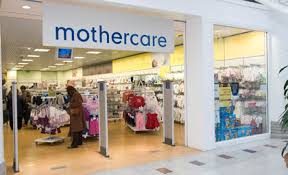Way2Franchise’s Tribute to 26/11 Brave Hearts
This tribute is Dedicated to the men, women and children who lost their lives; those brave people who sacrificed their lives And the Heroes that responded to the emergency.
26th November, 2008 was a horrible day, but it was also a day in which innumerable heroes showed unparalleled courage and love. Shaikh Toufik Mohammed, the brave tea stall owner at CST responded to the attacks, warned others of the attacks and took the injured to the nearby hospital.
The Police Officers and the NSG team that courageously went inside the Taj, Oberoi (Hilton) when others were going out. These heroes knew they were in a very dangerous situation, but they did not hesitate.
Mumbai's fire fighters , who battled not only fire but gunfire too during the 26/11 attacks to save hundreds of lives. And that is what heroes do…they act in spite of great danger. They help others. They risk their lives for us. 39 firefighters and 27 police officers died in the line of duty on that day. They performed their duty at the highest level possible. They are paragons. We will never forget them. And 328 precious people lost their lives on November 26, 2008. And every one of them is a hero. We were in a war that day. And these heroes were thrust to the front lines. They were courageous heroes. Every single one.
Many people were injured in the attack; but they faced the day with great courage and love. They are all heroes. The emergency medical personnel performed their duties with tremendous efficiency, professionalism, and courage, despite the tremendous stress that they were put under. They are all heroes. And most importantly, numerous people lost loved ones on 26-11; and these 26-11 survivors have dealt with unimaginable pain, yet they have persevered. Their spirits are the strongest that you will find. And they are among our greatest heroes. They are very, very special people...heroes every one.
26-11 was a tragedy. But it was also a day of heroes. And we were all reminded about how great the people of this country are – for never has courage, compassion, and heroism been manifested in the way it did on that day…ever, anywhere.
We are a nation of heroes. May our nation win over terrorism. Let us take a moment to pay a tribute to those that sacrificed their lives to protect Mumbai. Here is an email that I received recently:
===
Meeting with H N Srinivas – Senior Executive Vice President, Taj Group of Hotels
Few weeks ago (October 10, 2009), I had a dinner meeting with HNS in Goa (I was there for a National Institute of Personnel Management conference – as a speaker). He narrated the 26th November 2008 terror attack on Taj Mumbai and there were some important points.
A. Terrorist entry
1. They entered from the Leopold Colaba hotel entrance and also from the northern entrance – spraying indiscriminate bullets on the Taj security personnel and guests in general.
2. Though Taj had a reasonable security – they were surely not equipped to deal with terrorists who were spraying 6 bullets per trigger.
3. The strategy of the terrorists was to throw chunks of RDX in an open area that will explode and burn – creating chaos so that the guests and staff run helter skelter so that the terrorists could kill them. The idea was to create maximum casualties.
4. There were several critical gatherings and functions happening in the hotel on that day – a Bohra wedding, global meet of Unilever CEOs and Board members and 2 other corporate meetings were being held in the hotel – besides the usual crowd.
5. The firing and chaos began at about 8.30 p.m. and the staff including employees on casual and contract basis displayed exemplary presence of mind, courage and sacrifice to protect the guests who were in various halls and conference rooms.
B. Stories of Staff Heroics
1. A young lady guest relation executive with the HLL gathering stopped any of the members going out and volunteered 3 times to go out and get stuff such as ice cubes for whiskey of the guests when the situation outside the hall was very explosives and she could have been easily the target of the bullets
2. Thomas George a captain escorted 54 guests from a backdoor staircase and when he was going down last he was shot by the terrorists
3. There were 500 emails from various guests narrating heroics of the staff and thanking them for saving their lives
4. In a subsequent function, Ratan Tata broke down in full public view and sobbed saying – “the company belongs to these people”. The wife of Thomas George who laid his life saving others said, she and the kids were proud of the man and that she did not know that for 25 years she lived with a man who was so courageous and brave
5. The episode happened on 26th November, a significant part of the hotel was burnt down and destroyed – the hotel was re-opened on 21st December and all the employees of the hotel were paraded in front of the guests
6. It was clearly a saga of extra-ordinary heroics by ordinary people for their organisation and in a way for their country. The sense of duty and service was unprecedented
7. The young lady who protected and looked after the HLL guests was a management trainee and we often speak of juniority and seniority in the organisation. She had no instructions from any supervisor to do what she did
a. She took just 3 minutes to rescue the entire team through the kitchen
b. Cars were organised outside the hotel as per seniority of the members
c. In the peak of the crisis, she stepped out and got the right wine glass for the guest
8. People who exhibited courage included janitors, waiters, directors, artisans and captains – all level of people
C. The Tata Gesture
1. All category of employees including those who had completed even 1 day as casuals were treated on duty during the time the hotel was closed
2. Relief and assistance to all those who were injured and killed
3. The relief and assistance was extended to all those who died at the railway station, surroundings including the “Pav-Bhaji” vendor and the pan shop owners
4. During the time the hotel was closed, the salaries were sent my money order
5. A psychiatric cell was established in collaboration with Tata Institute of Social Sciences to counsel those who needed such help
6. The thoughts and anxieties going on people’s mind was constantly tracked and where needed psychological help provided
7. Employee outreach centers were opened where all help, food, water, sanitation, first aid and counseling was provided. 1600 employees were covered by this facility
8. Every employee was assigned to one mentor and it was that person’s responsibility to act as a “single window” clearance for any help that the person required
9. Ratan Tata personally visited the families of all the 80 employees who in some manner – either through injury or getting killed – were affected.
10. The dependents of the employees were flown from outside Mumbai to Mumbai and taken care off in terms of ensuring mental assurance and peace. They were all accommodated in Hotel President for 3 weeks
11. Ratan Tata himself asked the families and dependents – as to what they wanted him to do.
12. In a record time of 20 days, a new trust was created by the Tatas for the purpose of relief of employees.
13. What is unique is that even the other people, the railway employees, the police staff, the pedestrians who had nothing to do with Tatas were covered by compensation. Each one of them was provided subsistence allowance of Rs. 10K per month for all these people for 6 months.
14. A 4 year old granddaughter of a vendor got 4 bullets in her and only one was removed in the Government hospital. She was taken to Bombay hospital and several lacs were spent by the Tatas on her to fully recover her
15. New hand carts were provided to several vendors who lost their carts
16. Tata will take responsibility of life education of 46 children of the victims of the terror
17. This was the most trying period in the life of the organisation. Senior managers including Ratan Tata were visiting funeral to funeral over the 3 days that were most horrible
18. The settlement for every deceased member ranged from Rs. 36 to 85 lacs in addition to the following benefits:
a. Full last salary for life for the family and dependents
b. Complete responsibility of education of children and dependents – anywhere in the world
c. Full Medical facility for the whole family and dependents for rest of their life
d. All loans and advances were waived off – irrespective of the amount
e. Counselor for life for each person
D. Epilogue
1. How was such passion created among the employees? How and why did they behave the way they did?
2. The organisation is clear that it is not something that someone can take credit for. It is not some training and development that created such behaviour. If someone suggests that – everyone laughs
3. It has to do with the DNA of the organisation, with the way Tata culture exists and above all with the situation that prevailed that time. The organisation has always been telling that customers and guests are #1 priority
4. The hotel business was started by Jamshedji Tata when he was insulted in one of the British hotels and not allowed to stay there.
5. He created several institutions which later became icons of progress, culture and modernity. IISc is one such institute. He was told by the rulers that time that he can acquire land for IISc to the extent he could fence the same. He could afford fencing only 400 acres.
6. When the HR function hesitatingly made a very rich proposal to Ratan – he said – do you think we are doing enough?
7. The whole approach was that the organisation would spend several hundred crore in re-building the property – why not spend equally on the employees who gave their life?
(Source: Deepak Salaskar)



![[Pinault]](http://s.wsj.net/public/resources/images/P1-AS634_Pinaul_DV_20091123171400.jpg)




